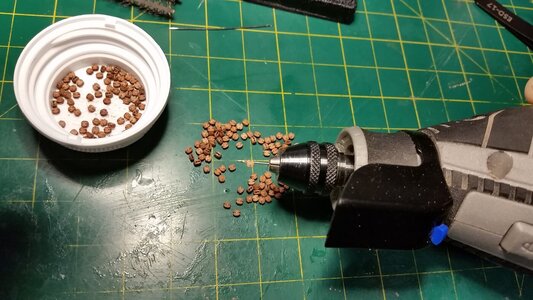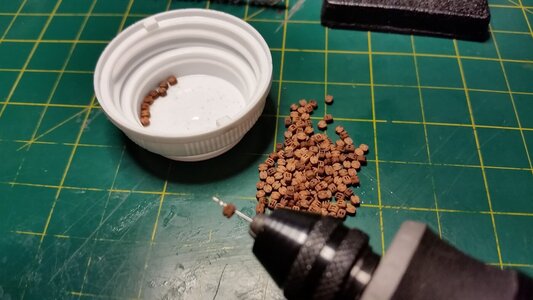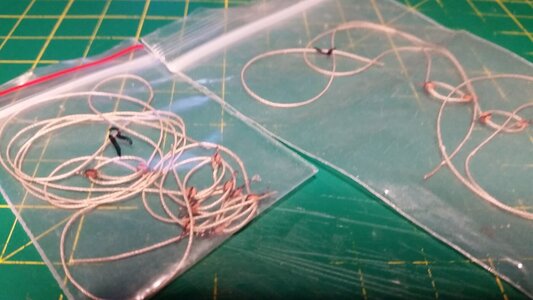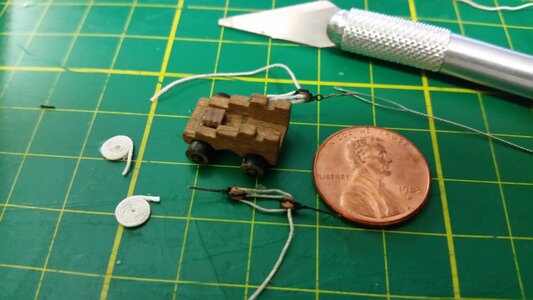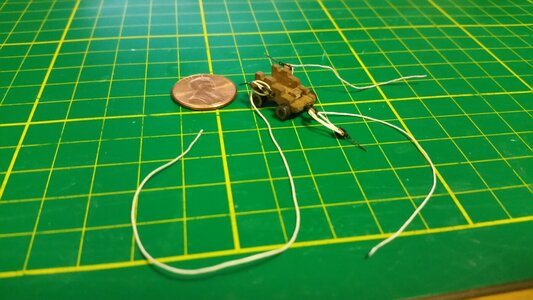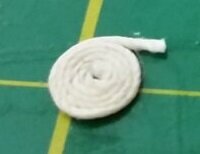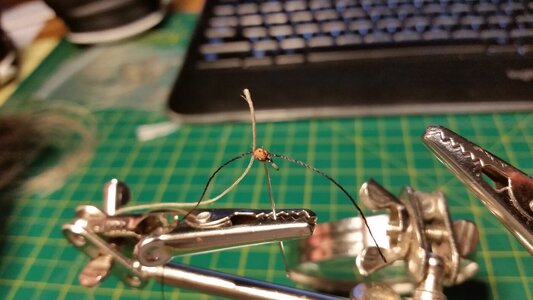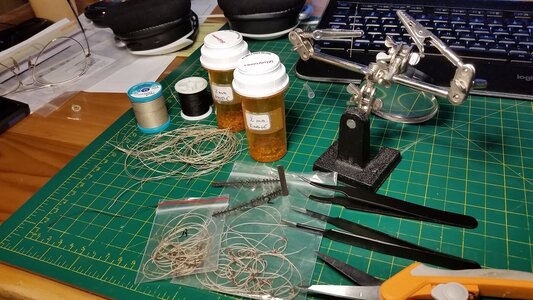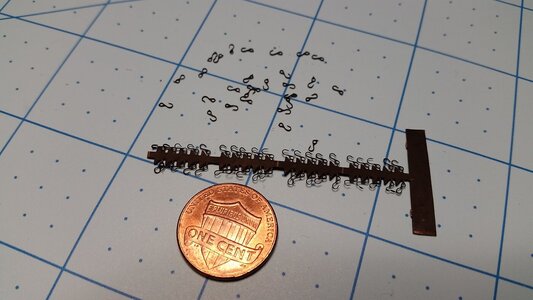While Paul is speeding ahead with his Wasa build, I am mired in the details on my build of the Sovereign, trying to challenge myself not only in making tiny details, but in boring the hell out of myself with the tedious work that 100 guns brings when you build the most heavily armed vessel of the 17th century. I made a micro-step today in preparing the lower deck guns for installation.
After much thinking about how to go about it, I made a small jig that was used to drill the holes for the breaching line eyebolts and the eyebolts which the gun tackles are hooked to. These holes were drilled through the hull with a Dremel with the jig used keep their position correct and consistent. The next task will be to make 47 more gun tackles using 2mm blocks and then rig them to the carriages.
Taking a test gun, the first of twenty-four cannon of VII drakes, I made the breaching line and seized the eyebolts on each end with black thread, secured with PVA glue. Before that, I cut twenty-four 13mm long breaching lines from 0.08mm line left over from the La Couronne build. The line was fit to the carriage, running it through the breach line rings and gluing it to the cascabel. PVA glue was used to stiffen the breaching line, gluing it to the carriage wheels and creating the proper drooping appearance of the line to make it look more real.
The center square of wood for the jig is inserted into the gun port from the outside, ensuring consistent location of the drilled holes.
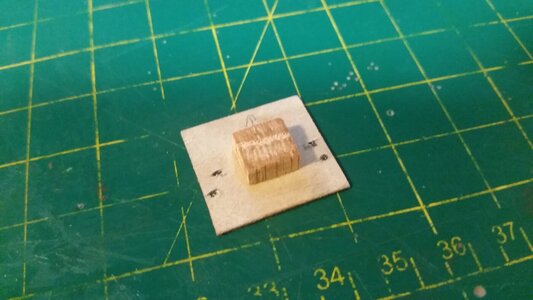
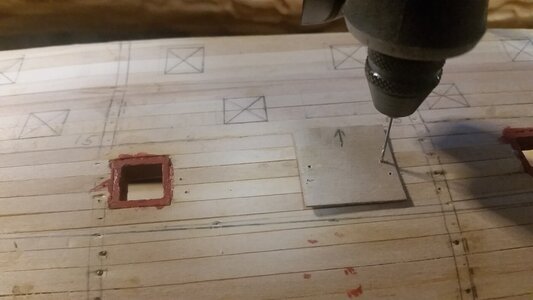
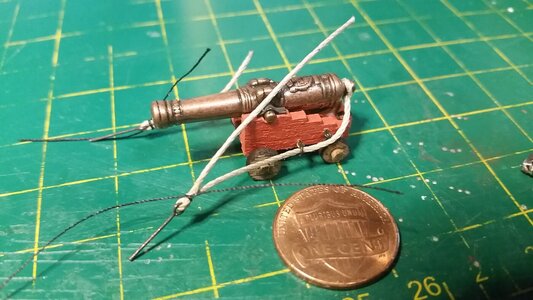
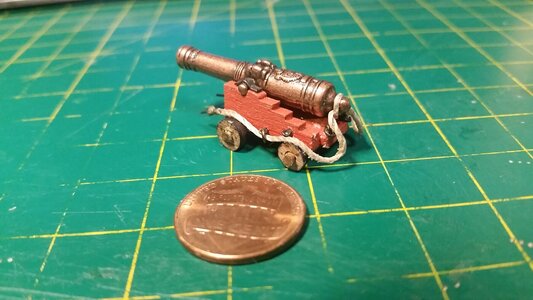
After much thinking about how to go about it, I made a small jig that was used to drill the holes for the breaching line eyebolts and the eyebolts which the gun tackles are hooked to. These holes were drilled through the hull with a Dremel with the jig used keep their position correct and consistent. The next task will be to make 47 more gun tackles using 2mm blocks and then rig them to the carriages.
Taking a test gun, the first of twenty-four cannon of VII drakes, I made the breaching line and seized the eyebolts on each end with black thread, secured with PVA glue. Before that, I cut twenty-four 13mm long breaching lines from 0.08mm line left over from the La Couronne build. The line was fit to the carriage, running it through the breach line rings and gluing it to the cascabel. PVA glue was used to stiffen the breaching line, gluing it to the carriage wheels and creating the proper drooping appearance of the line to make it look more real.
The center square of wood for the jig is inserted into the gun port from the outside, ensuring consistent location of the drilled holes.









